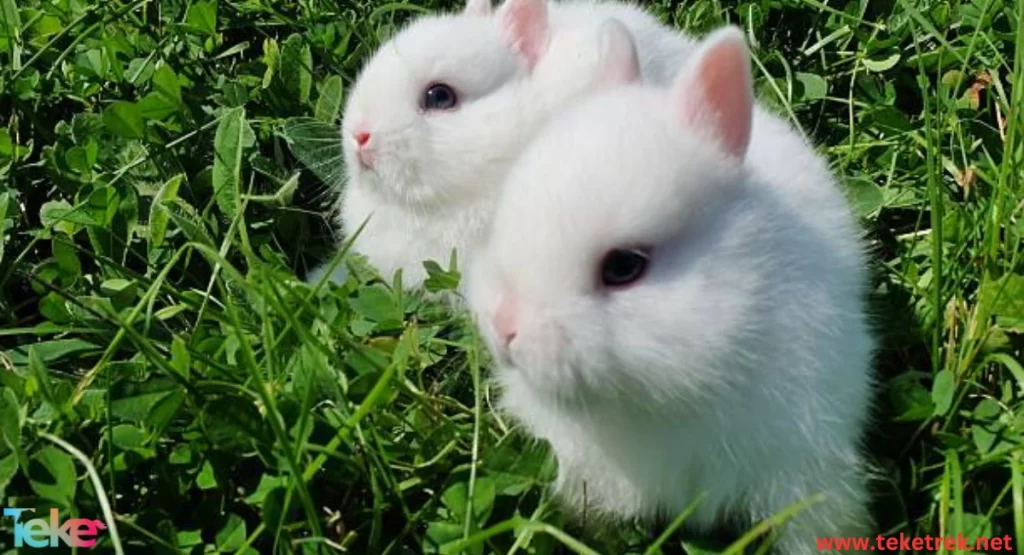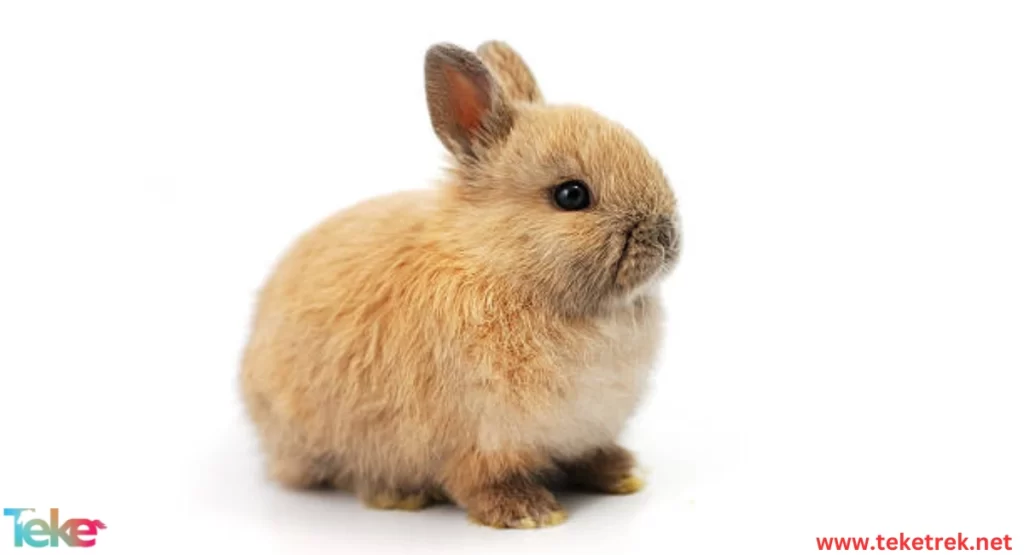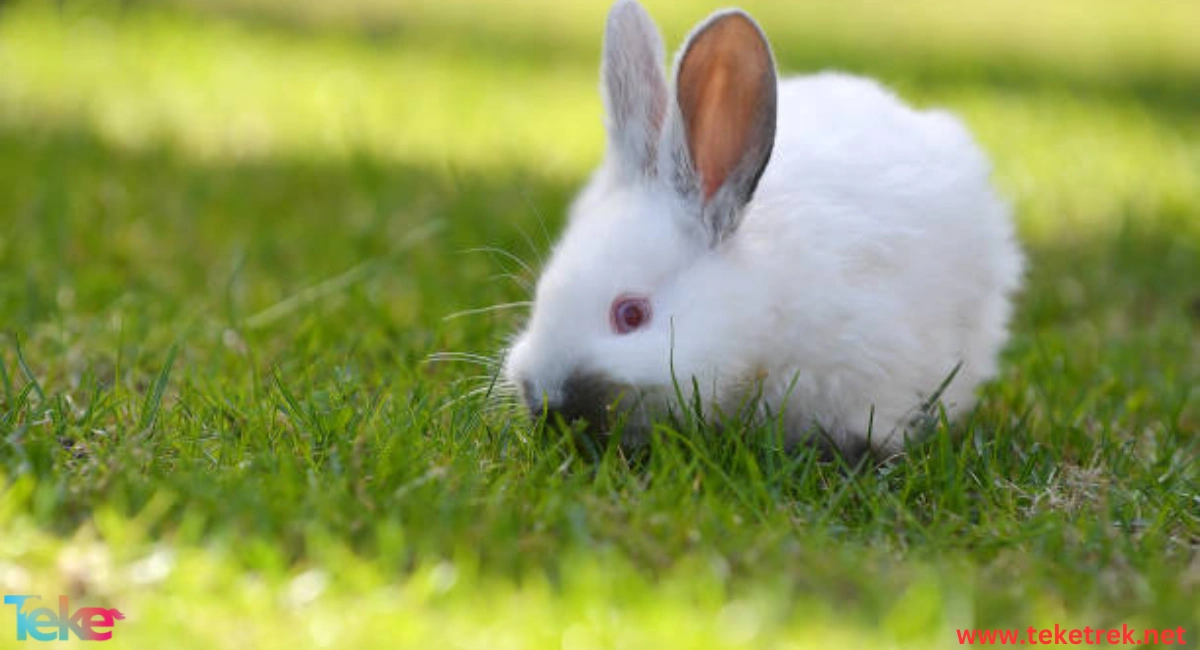The Netherland Dwarf rabbits are considered one of the smallest breeds of rabbits. They were created by crossing wild rabbits with Polish rabbits.
Due to their small size, Netherland Dwarf rabbits are not considered for meat, but they are one of the most common pets. They are characterized by their various and multiple colors.
It first originated in the Netherlands in the early 20th century. They were first imported to the United Kingdom in 1948 and in the sixties of the last century.
Let’s learn more about it from teketrek.
Specifications of the Netherland Dwarf Rabbit
Netherland Dwarf rabbit size: The weight of the Netherland Dwarf rabbit is approximately 1.3 to 1.5 kilograms. It has a full body and well-developed muscles, with a cylindrical body shape.
Head: The Netherland Dwarf rabbit has a small oval head, an invisible neck, and a slightly flat nose.
Ears and eyes: The Netherland Dwarf rabbit has ears that reach about two inches in length, close to the head and covered with fur, and it has round eyes.
Legs and fur: The Netherland Dwarf rabbit has very strong hind legs, and its body is covered with a shiny, sensitive, and dense coat. Its fur is of medium length.
Color: The Netherland Dwarf rabbit is characterized by its various colors, the most common of which are chocolate, red, and silver.

Amazing Facts, and Interesting Information enjoyed by the Netherland Dwarf Rabbit
The Netherland Dwarf rabbit is very popular because it has many advantages, such as:
– It is considered a friendly and lovable personality. It is also easy to handle and does not possess any aggression.
– The Netherland Dwarf rabbit has a very small body size. This allows it to be raised in apartments and homes.
But with all these advantages, the Netherland Dwarf rabbit has unavoidable disadvantages, such as:
– The Netherland Dwarf rabbit tends to suffer from many diseases, including stubborn diseases.
– The Netherland Dwarf rabbit requires constant care and cleaning.
– The Netherland Dwarf rabbit has a foul smell, and its activity starts at night.
The Netherland Dwarf Rabbit group is divided into five groups
1. **Natural Netherland Dwarf Rabbit**:
This rabbit is distinguished by its white coat with red eyes, white coat with blue eyes, purple, blue, black, and chocolate colors.
2. **Agouti Netherland Dwarf Rabbit**:
Opal, chestnut, Chinchilla rabbit, sable rabbit, and squirrel rabbit.
3. **Brown Dutch Dwarf Rabbit**:
Brown, agouti, squirrel agouti, silver squirrel, and smoke pearl.
There are other types of Netherland Dwarf rabbits, including orange, fawn, Himalayan, steel, and broken.
Female Netherland Dwarf rabbits tend to be lazy and inactive, but their overall temperament is very calm and intelligent.
These rabbits are very intelligent animals and can be trained to use a litter box. However, they should always be kept inside the cage when unsupervised to prevent them from chewing wires and to protect the wood in your home.
Netherland Dwarf rabbits are affectionate, fun, and quite amusing. They tend to feel shy when introduced to their new home for the first time and are usually afraid of their new surroundings and owner.
The Netherland Dwarf rabbit is a social animal and should be purchased in pairs.
What is the food of the Dutch Dwarf rabbit
The diet of the Netherland Dwarf Rabbit consists mainly of hay and grass, as they are completely animals. herbivorous . They also need plenty of timothy hay and fresh, clean water.
Netherland Dwarf rabbits also eat leafy vegetables like lettuce, spinach, and other vegetables such as carrots, and sometimes fruits like apples. However, they should not be fed too much fruit due to its sugar content, which can lead to obesity.
Animals that change their fur in winter: How does nature adapt to the cold?
Reproduction stages in Netherland Dwarf Rabbits
Netherland Dwarf rabbits tend to mature faster than other rabbit breeds and can start reproducing as early as three to four months on average. They can continue reproducing until about four years of age.
Eggs are released through mating. The typical gestation period ranges between 31 to 33 days. They usually give birth to between two to four rabbits.

FAQs about the Dutch Dwarf rabbit
What is the growth timeline for a rabbit?
From the sixth to the twelfth month: Regular breeds reach their mature weight around the tenth month of age, while giant breeds reach it between the twelfth and fourteenth month.
Are Netherlands dwarf rabbits rare?
No, it isn’t rare, but it is one of the most popular rabbits.
Are Netherlands dwarf rabbits smart?
Yes, it is smart.
Is a Netherlands dwarf rabbit a good pet?
Yes, it can be a good pet.
How long do Dutch dwarf rabbits live?
Netherland Dwarf rabbit lifespan ranges between 7 to 10 years.
In conclusion, it’s important to highlight the beautiful and calm behavior characteristic of the Dutch Dwarf rabbit, making it distinct. Its small and adorable appearance appeals to both young and old, making it wonderful to raise.
References





